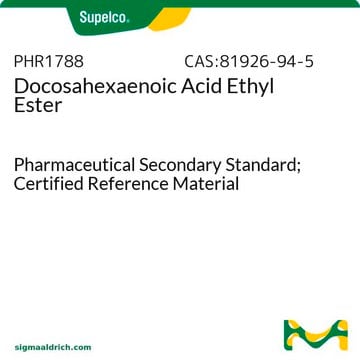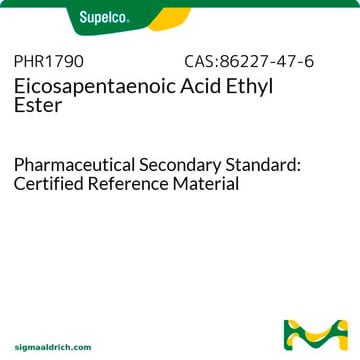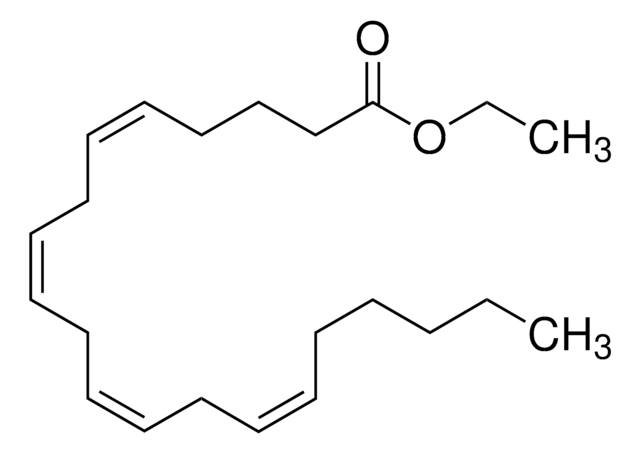D2954600
Docosahexansäure-Ethylester
European Pharmacopoeia (EP) Reference Standard
Synonym(e):
4,7,10,13,16,19-Docosahexaensäure-ethylester
About This Item
Empfohlene Produkte
Qualität
pharmaceutical primary standard
API-Familie
docosahexaenoic acid ethyl ester
Hersteller/Markenname
EDQM
Anwendung(en)
pharmaceutical (small molecule)
Format
neat
InChI
1S/C24H36O2/c1-3-5-6-7-8-9-10-11-12-13-14-15-16-17-18-19-20-21-22-23-24(25)26-4-2/h5-6,8-9,11-12,14-15,17-18,20-21H,3-4,7,10,13,16,19,22-23H2,1-2H3/b6-5+,9-8+,12-11+,15-14+,18-17+,21-20+
InChIKey
ITNKVODZACVXDS-YATCGRJWSA-N
Suchen Sie nach ähnlichen Produkten? Aufrufen Leitfaden zum Produktvergleich
Allgemeine Beschreibung
Weitere Informationen und Unterstützung finden Sie auf der Webseite der entsprechenden Pharmakopöe.
Anwendung
Verpackung
Sonstige Hinweise
Ähnliches Produkt
Lagerklassenschlüssel
11 - Combustible Solids
WGK
WGK 3
Flammpunkt (°F)
Not applicable
Flammpunkt (°C)
Not applicable
Choose from one of the most recent versions:
Analysenzertifikate (COA)
Sorry, we don't have COAs for this product available online at this time.
If you need assistance, please contact Kundensupport
Besitzen Sie dieses Produkt bereits?
In der Dokumentenbibliothek finden Sie die Dokumentation zu den Produkten, die Sie kürzlich erworben haben.
Kunden haben sich ebenfalls angesehen
Unser Team von Wissenschaftlern verfügt über Erfahrung in allen Forschungsbereichen einschließlich Life Science, Materialwissenschaften, chemischer Synthese, Chromatographie, Analytik und vielen mehr..
Setzen Sie sich mit dem technischen Dienst in Verbindung.










